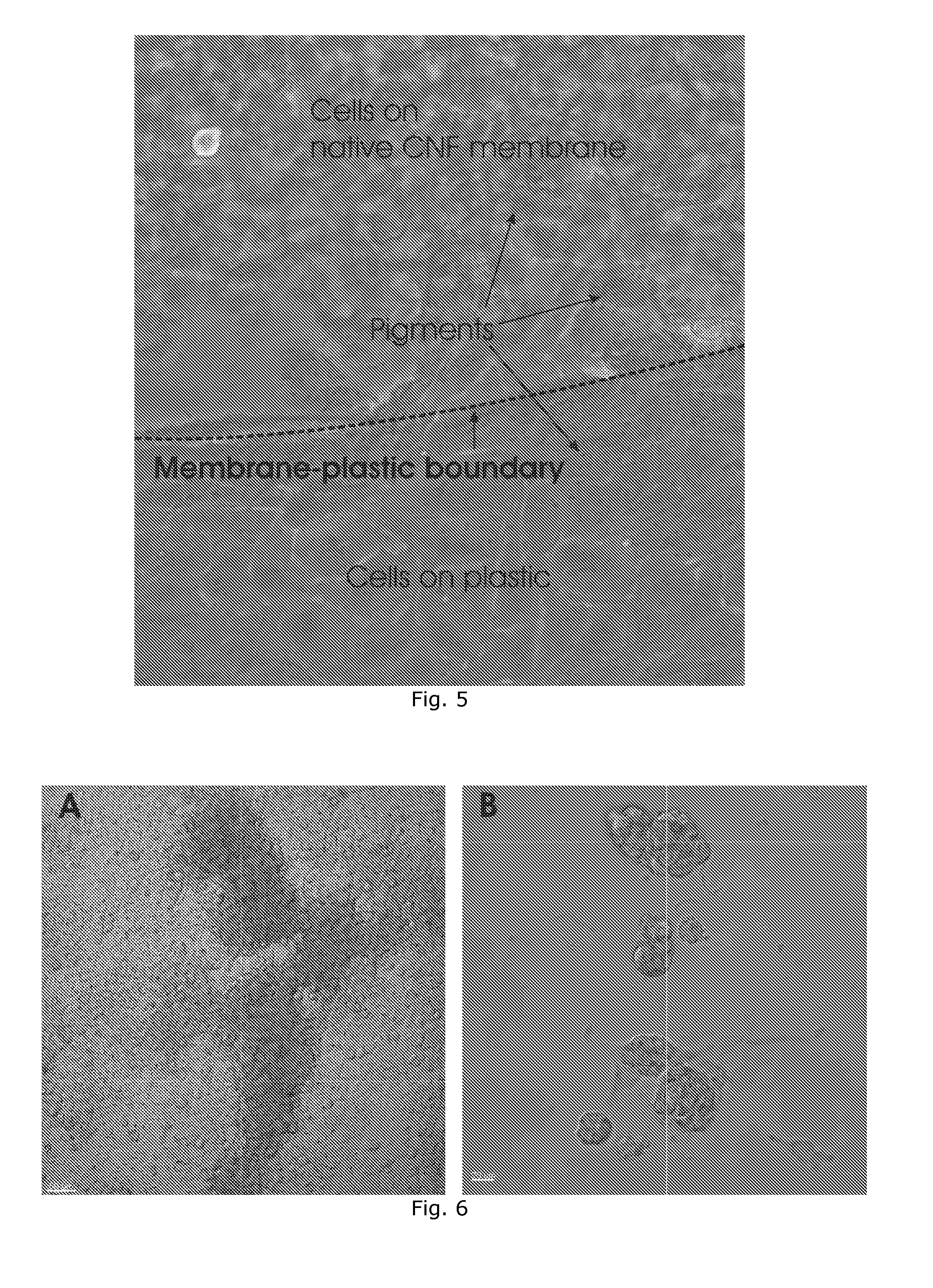Plant derived cell culture material
a cell culture material and plant technology, applied in the field of plant derived cell culture and cell delivery compositions, can solve the problems that the 3d cell culture biomaterials do not allow the transfer of hydrogel matrix with a needle without serious damage to the cultured cells
- Summary
- Abstract
- Description
- Claims
- Application Information
AI Technical Summary
Benefits of technology
Problems solved by technology
Method used
Image
Examples
example 1
Comparison Of Cell Viability Of HepG2 Cells In Different Cell Culture Materials
[0107]Cellulose nanofiber hydrogels were placed in the bottom of a 96 well tissue culture plate and HepG2 cell suspension in maintenance growth media containing 25,000-50,000 cells per well were seeded either on top of the hydrogel or mixed with it. Hydrogel concentration ranges from 1-0.01%. The fluorescence intensity which indicates the cell viability and proliferation was measured as a function of days after culturing the cells on the cellulose nanofiber hydrogel in an incubator at 37 C in 5% CO2 and 95% relative humidity.
[0108]Three commercially available cell culture materials were used as reference 3D culture materials: MaxGel™ (Sigma-Aldrich), HydroMatrix™ (Sigma-Aldrich) and PuraMatrix™ (3DM Inc.). The experimental setup was identical for all the studied materials.
[0109]Viability of HepG2 cells was quantified by AlamarBlue™ Cell Viability Assay Kit (Biotium Inc., Hayward, Calif., USA) as presented...
example 2
Transferring Of ARPE-19 Cells With A Syringe Needle
[0111]ARPE-19 cells (25 000 cells per well) were seeded and cultured in CNF matrix on the bottom of the 96 well plate. Viability of ARPE-19 cells after transferring the cells with a syringe needle of different sizes is presented in FIG. 3. The same phenomenon can be obtained also with other cell types like HepG2 and ES cells.
[0112]More detailed explanation of the Transferring of ARPE-19 cells with a syringe needle are follows: At the Transfer 1 in FIG. 3 the cells were incubated for 48 hours with 1.66% CNF, and after that the cells were transferred with a syringe (20G-27G) about 100 μl into a 96-well plate. After the transfer with the syringe the cells were incubated for 24 hours, and the viability of the cells in CNF was measured.
[0113]At the Transfer 2, the cells incubated for 24 hours in 1.66% CNF were transferred with a 27G syringe (about 2 ml) into a fresh medium. The cells were incubated for 24 hours after the transfer, after ...
example 3
Stem Cells
Live / Dead Staining Of hES Cell-Derived Hepatic Progenitor Cells
[0115]Human ES cell-derived hepatic progenitor cells were imbedded in native CNF hydrogel (FIG. 15) and cultured for 7 days with and without collagen IV. No background was detected. Human ES cell-derived hepatic progenitor cells were imbedded in transparent CNF hydrogel and cultured for 7 days with and without collagen IV. No background was detected, which makes this material extremely easy to use in this context. Usually other materials used e.g. MatriGel and MaxGel have a significant fluorescent background, and therefore it is difficult to work with those matrices. The ES cells are possible to keep in CNF hydrogel, they survive and thus this material is able to keep them alive. In addition, ES cells form also 3D structure, which has not been observed earlier with any other material.
PUM
| Property | Measurement | Unit |
|---|---|---|
| diameter | aaaaa | aaaaa |
| diameter | aaaaa | aaaaa |
| diameter | aaaaa | aaaaa |
Abstract
Description
Claims
Application Information
 Login to View More
Login to View More - R&D
- Intellectual Property
- Life Sciences
- Materials
- Tech Scout
- Unparalleled Data Quality
- Higher Quality Content
- 60% Fewer Hallucinations
Browse by: Latest US Patents, China's latest patents, Technical Efficacy Thesaurus, Application Domain, Technology Topic, Popular Technical Reports.
© 2025 PatSnap. All rights reserved.Legal|Privacy policy|Modern Slavery Act Transparency Statement|Sitemap|About US| Contact US: help@patsnap.com



